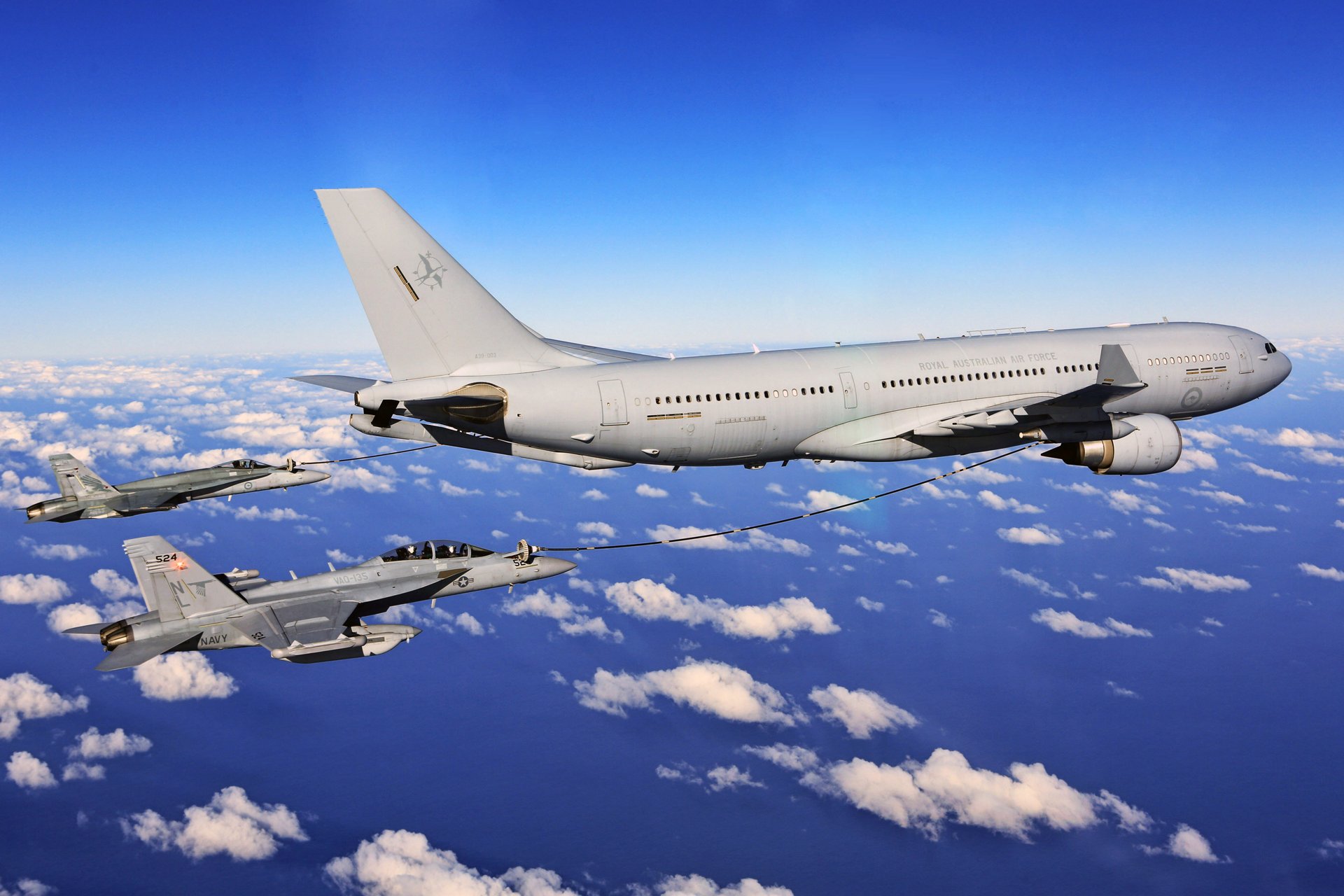The Airbus A330 Multi Role Tanker Transport (MRTT) is an aerial refuelling tanker and transport aircraft based on the civilian Airbus A330. The A330 MRTT has been ordered by the Royal Australian Air Force (RAAF), Royal Air Force (RAF), Royal Saudi Air Force (RSAF), United Arab Emirates Air Force and Republic of Singapore Air Force (RSAF). The EADS/Northrop Grumman KC-45 was a version of the A330 MRTT proposed for the United States Air Force. The A330 MRTT is the most effective tanker based on its unmatched fuel capacity that allows it to offload more fuel at any given distance than any competitor. More fuel on-board means more flexibility, more range and longer time on station. This enormous fuel capacity allows the A330 MRTT to act as a force multiplier, thus, improving the efficiency and effectiveness of fast jets operations.

To refuel receptacle-equipped aircraft such as the F-16 Fighting Falcon, F-35A Lightning II, or even the A330 MRTT itself (when fitted with an UARRSI), the A330 MRTT is provided with the advanced Airbus Defence & Space Aerial Refuelling Boom System (ARBS). Its fast fuel flow rate (up to a maximum of 3600 kg/min – 1200 US gal/min) makes the ARBS the most capable new generation flight proven Boom available. Excellent handling qualities are provided for the operation of the ARBS, rated as such by independent assessments. Under-wing Pods provide simultaneous Hose and Drogue refuelling at high fuel offload rate (1300 kg/min – 420 US gal/min), allowing receivers to minimise refuelling time and increase operation efficiency. The Cobham 905E Under-Wing Pods, currently in service and proven in operation, enable the A330 MRTT to refuel any NATO or allied Probe-equipped receivers such as the Eurofighter, the Tornado, the Jaguar, the F/A18 Hornet or the Sukhoi 30. The A330 MRTT physical compatibility with receivers across the world is established, demonstrated and certified to allow coalition interoperability. The 900 series Wing-Pods incorporate a digitally controlled and electrically operated Hose drum unit, optimizing reliability and maintainability.

With its true wide-body fuselage, the A330 MRTT is ideal to carry any kind of military or humanitarian payload on strategic missions. The A330 MRTT can carry up to 111 tonnes of fuel; this is the highest capacity of all tanker aircraft, even those which have additional fuel tanks in the cargo deck. It has the capacity of offloading 50 000 kg of fuel to a broad range of receivers during a 4-hour loitering mission at over 1 000 nm from its take-off point. The A330 MRTT can carry a maximum payload of up to 45 tonnes, combining the passenger cabin and the lower deck: Up to 300 Passengers, MedEvac cabin layout with 40 stretchers, 20 seats for medical staff and 100 passengers, Up to 37 tonnes of cargo in the lower deck. 27 LD3 containers or 8 military pallets. Another typical mission is the deployment of fighter aircraft over a long distance. The A330 MRTT can support the deployment of 4 fighter aircraft plus 50 personnel and 12 tonnes of freight (luggage, spare parts and equipment) in one direct flight over 5200 km, e.g. from Europe to Afghanistan.

The A330 MRTT is capable of carrying a payload of up to 45 tonnes / 99,000 lb. The versatility of the A330 MRTT enables cargo to be conveniently stored within the lower deck in a variety of cargo options covering the full range of existing under floor cargo containers and pallets, ranging from the LD1 to LD3 and LD6, as well as the standard 88×108 inch 463-L NATO military pallets. Some of the cargo can also be carried as non-palletised “bulk”. The A330 MRTT is also an outstanding strategic aeromedical evacuation (MedEvac) aircraft. Its large fuselage permits maximum flexibility for up to 130 NATO stretchers to be carried over intercontinental distances. In a ‘light medevac’ configuration, medical beds can be installed above designated fold-down seats. This allows the aircraft to be used as a troop transport on an outbound relief mission, with medical beds stowed in the lower cargo compartments, and then rapidly converted for MedEvac on the return. In an ‘Intensive MedEvac’ configuration, critical care modules can be installed to replicate an intensive care unit in the air. The aircraft could typically carry 28 NATO stretchers, up to six critical care modules, 20 seats for medical staff, and 100 passenger seats.















